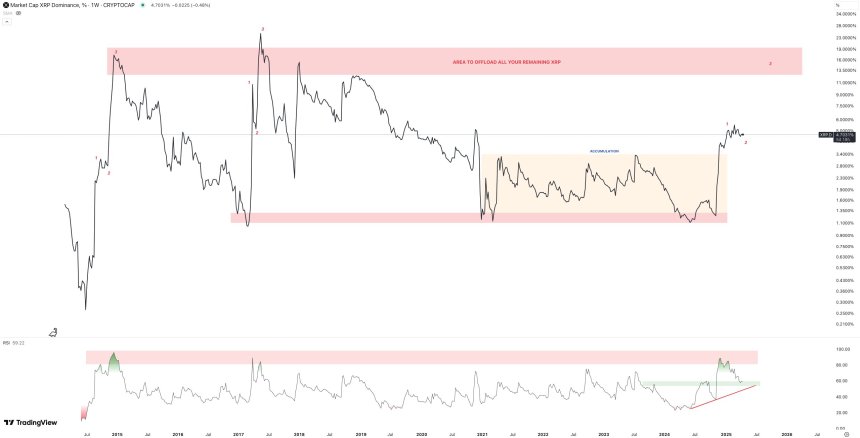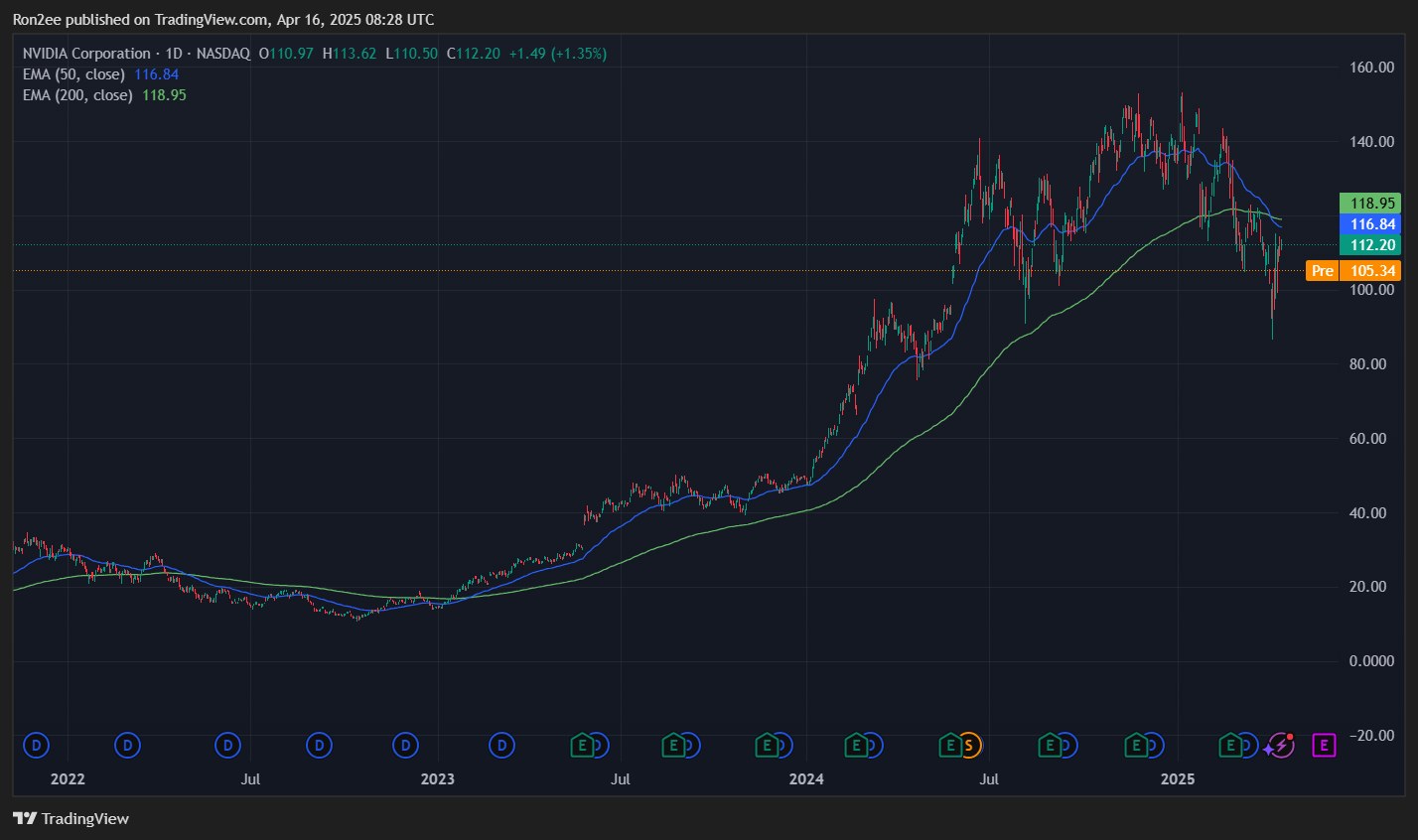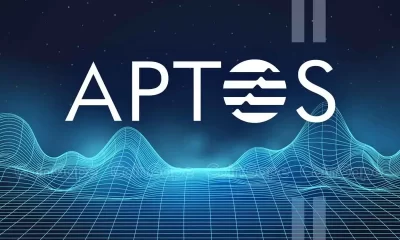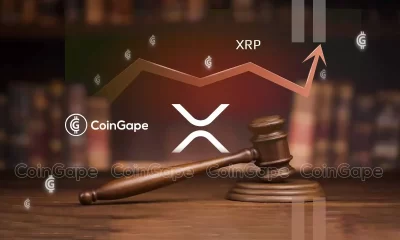cryptocurrency
Tornado Cash smart contracts cleared of OFAC sanctions in latest ruling
Published
5 months agoon
By
admin

A U.S. appeals court ruled that the Treasury exceeded its authority by sanctioning Tornado Cash’s immutable smart contracts, declaring them outside the scope of federal property laws.
On Nov. 26, the Fifth Circuit Court of Appeals overturned a prior ruling by the U.S. Department of the Treasury’s Office of Foreign Assets Control, stating that smart contracts operating autonomously without human intervention cannot be classified as “property.”
Per the ruling, immutable smart contracts are lines of code not subject to ownership or control, falling outside the purview of the International Emergency Economic Powers Act.
For those unfamiliar, the IEEPA is a federal law that grants the President authority to regulate international economic transactions and impose sanctions.
However, the panel noted that Tornado Cash’s immutable smart contracts cannot be “blocked” under IEEPA, as they do not qualify as services or property.
The judges referenced a “trusted setup ceremony,” a contract update conducted in May 2020, where over 1,000 participants contributed cryptographic data to finalize the cryptographic parameters of Tornado Cash’s smart contracts.
By eliminating the possibility of updates or administrative control, the process ensured that all smart contracts were immutable. Governance was subsequently transferred to the Tornado Cash community via the TORN token, an ERC-20 token launched in 2021 for voting on protocol changes.
As a result, these smart contracts operate autonomously without human intervention, making them distinct from entities that can be classified as property or services. The IEEPA allows for the regulation of property or services connected to foreign entities, but the autonomous nature of the smart contracts meant they did not fit within these definitions.
The ruling rejected the Treasury’s interpretation of the law and concluded that “Legislating is Congress’s job.”
Paul Grewal, Coinbase’s Chief Legal Officer, supported the decision, stating, “Blocking open-source technology entirely because some users misuse it is not what Congress authorized.”
Coinbase, which financially backed the case against the Treasury Department’s action, has been a vocal advocate for protecting open-source development in the crypto sector.
According to ConsenSys lawyer Bill Hughes, the court’s decision mandates the removal of these specific contracts from the sanctions list. However, he clarified that other parts of Tornado Cash or related protocols might still face sanctions.
“A good win. One which the Supreme Court would be unlikely to reverse,” he added.
Crypto mixer Tornado Cash, sanctioned by the U.S. Treasury in August 2022, was accused of enabling over $7 billion in illicit transactions.
Following the sanctions, six users, including two Coinbase employees, challenged the OFAC’s decision to include 44 Tornado Cash smart contract addresses on the Specially Designated Nationals (SDN) list, arguing that the Treasury misapplied its authority under IEEPA.
A Texas district court initially upheld the Treasury’s actions, ruling that Tornado Cash could be treated as an “entity” under OFAC regulations. The plaintiffs appealed, resulting in the Fifth Circuit’s recent decision.
Source link
You may like


Apple Delists 14 Crypto Apps in South Korea Including KuCoin and MEXC Exchanges Amid Regulatory Crackdown


Athens Exchange Group eyes first onchain order book via Sui


Futureverse Acquires Candy Digital, Taps DC Comics and Netflix IP to Boost Metaverse Strategy


Court Grants Ripple And SEC’s Joint Motion To Suspend Appeal


AVAX Falls 2.1% as Nearly All Assets Trade Lower


What is a VTuber, and how do you become one in 2025?
Blockchain
Athens Exchange Group eyes first onchain order book via Sui
Published
2 hours agoon
April 16, 2025By
admin

Greek exchange Athens Exchange Group has moved closer to adopting a Sui-based order book following its collaboration with Mysten Labs.
On April 16, the Sui (SUI) team announced that Athens Exchange Group, or ATHEX, had finalized the technical design for an onchain fundraising platform that will leverage zero-knowledge proofs on the Sui blockchain.
ATHEX’s ZK-powered fundraising platform will help the stock exchange enhance its offering with privacy and speed, bolstering its growth in traditional capital markets.
This nod to blockchain innovation and integration follows Sui contributor Mysten Labs’ partnership with the Athens Exchange Group in March 2024.
The collaboration between the two platforms aims to leverage their respective ecosystems to deliver the technical design for ATHEX’s Electronic Book Building (EBB), the exchange’s fundraising feature. By tapping into Sui’s technology and tooling, the company will be able to integrate zero-knowledge proofs into EBB’s bidding process.
Currently, Athens Exchange Group and Mysten Labs are eyeing a proof of concept, with this a key milestone towards building the first onchain order book for a stock exchange.
“The focus on privacy-preserving mechanisms, combined with Sui’s unparalleled speed and security, will enable us to build a state-of-the-art PoC that can evolve into a full-fledged onchain order book, setting a new benchmark for the industry,” said Dr. Kostas Kryptos Chalkios, Chief Cryptographer and Co-Founder of Mysten Labs
ATHEX will benefit from a platform that combines privacy-preserving mechanisms, speed and security.
Sui’s capacity to scale and handle transactions in parallel, with industry-leading throughput will be crucial to the stock exchange.
“By integrating zero-knowledge proofs, we aim to uphold the highest standards of compliance and data integrity while boosting operational efficiency for all market participants,” said Nikos Porfyris, chief operating officer at Athens Exchange Group.
Sui is the 10th largest blockchain by total value locked per DeFiLlama with over $1.18 billion in TVL.
Source link

Reason to trust

Strict editorial policy that focuses on accuracy, relevance, and impartiality
Created by industry experts and meticulously reviewed
The highest standards in reporting and publishing
Strict editorial policy that focuses on accuracy, relevance, and impartiality
Morbi pretium leo et nisl aliquam mollis. Quisque arcu lorem, ultricies quis pellentesque nec, ullamcorper eu odio.
As the XRP price climbs back above the crucial $2 mark, reflecting a 20% surge over the past week, market analysts are increasingly optimistic about the token’s recovery and potential for setting new all-time highs (ATHs).
Expert analyst Maelius recently shared insights on social media platform X (formerly Twitter), suggesting that the current market dynamics support a bullish outlook for the XRP price.
XRP Price Could Target $10 In Conservative Case
Despite the recent price surge, some market participants remain skeptical about XRP’s trajectory. Maelius addressed these concerns, stating, “In a conservative case, I think XRP looks very bullish on higher time frames (HTFs).”
Historically, XRP has shown a pattern of respecting the 50-week Exponential Moving Average (EMA) during bull markets. Recently, the asset touched this EMA and rebounded, reinforcing the belief that it is on a positive trajectory.
Related Reading
In his social media update, Maelius outlined two scenarios for XRP’s future price movements: a conservative case and a more optimistic base case. In the conservative scenario, Maelius posits that XRP has completed its Wave 3 (W3) of a larger Elliott Wave cycle and is currently finalizing Wave 4. This suggests that XRP could expand into a final Wave 5, targeting $10.
The expert assigns a 35% probability to this conservative case, highlighting that price and Relative Strength Index (RSI) behaviors indicate a potential base formation around current levels before reaching new highs later in the year.
Maelius’s more optimistic scenario suggests that the top of Wave 3 may not have been reached yet. He points out that the accumulation phase for the XRP price has been longer than in previous cycles, indicating that the market may just be taking more time to develop.
In this case, the final W5 could extend into the first or second quarter of the next year, with targets ranging from $15 to $20 or higher.
Can Dominance Translate To Price Gains?
In addition to the XRP pprice analysis, Maelius examined the token’s market dominance, which indicates the token’s share within the broader cryptocurrency market.
The expert noted that while the token’s dominance has been preparing for a final upward move, this does not necessarily correlate with the XRP price reaching new highs.
The dominance metric, seen in the image below shared by Maelious, suggests that while XRP might underperform relative to other altcoins, it still has the potential for significant price appreciation.
Related Reading

The 1-week RSI for the token’s dominance is currently in an uptrend and resting on horizontal support. If this support level fails, a diagonal support line could provide the next level of defense.
Historically, XRP’s dominance has experienced two major impulses during previous cycles, each reaching notable resistance areas. However, Maelius cautions that the growing size of the market makes it increasingly challenging for any single asset to achieve the same peaks as in prior cycles.
Featured image from DALL-E, chart from TradingView.com
Source link
cryptocurrency
AI crypto tokens at risk as Nvidia faces restrictions on China exports
Published
10 hours agoon
April 16, 2025By
admin
AI-focused crypto tokens are seeing a dip as Nvidia, the top AI chipmaker fueling the space, could soon take a major financial hit due to new U.S. export restrictions.
In a filing on April 14, Nvidia said it expects around $5.5 billion in charges for the first quarter of fiscal year 2026 because of U.S. government rules limiting its AI chip sales to China.
On April 9, officials told Nvidia it now needs special export licenses for its popular H20 chips and others with similar capabilities. The new restrictions target China, Hong Kong, and Macau, with the government warning that the chips could end up powering Chinese supercomputers.
The H20 chip is the most advanced AI chip Nvidia is currently allowed to sell in China under the earlier rules. It’s reportedly been used by Chinese AI startup DeepSeek to train models, something that has raised concerns among U.S. lawmakers.
Even though Nvidia said it plans to spend hundreds of millions over the next four years making some AI chips in the U.S., that hasn’t stopped the stock from sliding after its latest filing and the expected hit to future revenues. NVDA dropped 6.3% in after-hours trading on April 15 to $105.10, and it’s down about 16.45% so far this year.
Nvidia’s decline mirrors a wider pullback in tech as Trump’s tariff escalation rattles investor confidence across the sector. Other prominent tech stocks were also in the red, with Apple down 0.20% from the previous close to $202.14, Microsoft off 0.56% at $385.73, Alphabet sliding 1.71% to $156.31, and Amazon dropping 1.33% to $179.59.
Adding to Nvidia’s troubles, a “death cross” has formed on the 1-day NVDA/USD chart, a bearish technical signal where its 50-day moving average drops below the 200-day one. The last time this happened was in April 2022, and Nvidia’s stock plunged nearly 50% in the following six months.

That’s got investors in AI crypto tokens on edge, as these tokens have often reacted to Nvidia-related news mostly due to the fact that Nvidia’s hardware plays a central role in powering the AI infrastructure that many of these projects rely on.
For instance, in December, reports of China launching an antitrust probe into Nvidia caused the AI crypto token market cap to drop by over 14% in a single day. In the past, a surge in the Nvidia stock price has also resulted in bullish rallies for AI tokens.
Following Nvidia’s latest filing, the total market cap of AI-related tokens has fallen 3.7% in the past 24 hours, now sitting at around $20.1 billion. Trading volume also declined, signaling weaker demand.
Near Protocol (NEAR), the biggest AI crypto by market cap, slid 5.3% over the past day. Other major tokens like Internet Computer (ICP), Render (RENDER), Sei (SEI), Virtuals Protocol (VIRTUAL), and Akash Network (AKT) also lost between 5% and 12%.
Source link

Apple Delists 14 Crypto Apps in South Korea Including KuCoin and MEXC Exchanges Amid Regulatory Crackdown

Athens Exchange Group eyes first onchain order book via Sui

Futureverse Acquires Candy Digital, Taps DC Comics and Netflix IP to Boost Metaverse Strategy
Court Grants Ripple And SEC’s Joint Motion To Suspend Appeal

AVAX Falls 2.1% as Nearly All Assets Trade Lower

What is a VTuber, and how do you become one in 2025?

Top Expert’s Update Sets $10 Target

How Academia Interacts With The Bitcoin Ecosystem

AB DAO and Bitget Launch Dual Reward Campaign, Distributing $2.6M Worth of $AB Globally

AI crypto tokens at risk as Nvidia faces restrictions on China exports

Coinbase Urges Australia to Vote for Crypto Progress in May

How High Would Pi Network Price Go If Pi Coin Adopts Transparency to Avoid Mantra Pitfalls

XRP’s ‘Rising Wedge’ Breakdown Puts Focus on $1.6 Price Support

China selling seized crypto to top up coffers as economy slows: Report

Ethereum Price Dips Again—Time to Panic or Opportunity to Buy?

Arthur Hayes, Murad’s Prediction For Meme Coins, AI & DeFi Coins For 2025

Expert Sees Bitcoin Dipping To $50K While Bullish Signs Persist

Aptos Leverages Chainlink To Enhance Scalability and Data Access

Bitcoin Could Rally to $80,000 on the Eve of US Elections

Crypto’s Big Trump Gamble Is Risky

Sonic Now ‘Golden Standard’ of Layer-2s After Scaling Transactions to 16,000+ per Second, Says Andre Cronje

Institutional Investors Go All In on Crypto as 57% Plan to Boost Allocations as Bull Run Heats Up, Sygnum Survey Reveals

Ripple-SEC Case Ends, But These 3 Rivals Could Jump 500x

3 Voting Polls Show Why Ripple’s XRP Price Could Hit $10 Soon

Has The Bitcoin Price Already Peaked?

The Future of Bitcoin: Scaling, Institutional Adoption, and Strategic Reserves with Rich Rines

A16z-backed Espresso announces mainnet launch of core product

Xmas Altcoin Rally Insights by BNM Agent I

Blockchain groups challenge new broker reporting rule

I’m Grateful for Trump’s Embrace of Bitcoin
Trending

 24/7 Cryptocurrency News5 months ago
24/7 Cryptocurrency News5 months agoArthur Hayes, Murad’s Prediction For Meme Coins, AI & DeFi Coins For 2025

 Bitcoin3 months ago
Bitcoin3 months agoExpert Sees Bitcoin Dipping To $50K While Bullish Signs Persist

 24/7 Cryptocurrency News3 months ago
24/7 Cryptocurrency News3 months agoAptos Leverages Chainlink To Enhance Scalability and Data Access

 Bitcoin5 months ago
Bitcoin5 months agoBitcoin Could Rally to $80,000 on the Eve of US Elections

 Opinion5 months ago
Opinion5 months agoCrypto’s Big Trump Gamble Is Risky

 Altcoins3 months ago
Altcoins3 months agoSonic Now ‘Golden Standard’ of Layer-2s After Scaling Transactions to 16,000+ per Second, Says Andre Cronje

 Bitcoin5 months ago
Bitcoin5 months agoInstitutional Investors Go All In on Crypto as 57% Plan to Boost Allocations as Bull Run Heats Up, Sygnum Survey Reveals

 Price analysis5 months ago
Price analysis5 months agoRipple-SEC Case Ends, But These 3 Rivals Could Jump 500x


